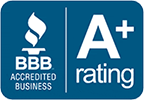Unlock the Benefits of Energy-Efficient Windows: Save Money and the Environment
Looking for a way to ramp up the efficiency and sustainability of your home? Installing energy efficient windows could be the solution you are looking for! Not only can energy efficient windows save you money, but they are also kind to the environment, making them a smart investment for homeowners.
What is an Energy Efficient Window?
An energy efficient window is a window that has been made from materials or with technology that is specifically designed to reduce the amount of energy used in a building. Simply put, it helps create a more energy efficient structure by reducing the transfer of heat. Generally speaking, these windows are made to be more airtight and watertight than traditional windows, and they often have multiple panes filled with gas, to insulate against energy loss.
Many argue that energy efficient windows can save homeowners money on their heating & cooling bills over time, while also being beneficial for the environment by decreasing the overall demand for carbon-based electricity sources. Conversely, there are those who criticize such claims as unsubstantiated due to the long timeline it takes to begin seeing a return on investment that covers the initial cost of installation.
No matter which side of the fence you fall on concerning energy efficient windows, there is no denying the very real benefits they can provide when designed and installed correctly. From significantly improved comfort levels within a facility to decreased monthly utility costs, taking the plunge into installing these windows should not be taken lightly. And with modern developments in renewable and alternate forms of energy becoming increasingly available every day, focused investments like this one could truly make a meaningful impact on our collective future.
Benefits of Energy Efficient Windows
Energy efficient windows offer a wide range of benefits that make them an attractive choice for homeowners and businesses alike. By providing greater resistance to heat transfer and improved insulation from the elements, they can boost the comfort of indoor areas while keeping energy costs lower.
They also block out harmful UV rays that can cause damage to furniture, carpets, and other furnishings in a home or business. As well, they often come with features such as low emissivity (LowE) coatings or inert gas between panes which makes them even more conducive to energy-efficiency.
Overall, energy-efficient windows are a smart investment, as they can help to save on utility bills while simultaneously protecting the environment by reducing carbon dioxide emissions linked to electricity production. In today’s world where environmental consciousness is of increasing importance, such benefits are especially relevant.
That said, some people may be concerned about the upfront cost associated with installing energy-efficient windows - however research shows that modern technology has made them more affordable than ever before, and their long-term cost savings usually outweigh any one-time installation fees. All in all, when weighing up the benefits of sustainability, comfort, and potential monetary savings versus cost, energy-efficient windows have become increasingly hard to ignore.
Not only do these windows help to reduce energy consumption and carbon emissions on a personal level, but engaging in such practices is a small yet significant step that each individual can take towards creating a greener future for us all.
Cost Savings on Utility Bills
The cost savings associated with energy efficient windows are the most compelling reason to make the switch. Studies have shown that homeowners could save up to $462 annually on their utility bills by investing in energy-efficient windows with improved thermal performance. These figures suggest that consumers can expect an average return on investment of anywhere between $101 and $111 annually, depending upon the type of window installed and its location throughout the home.
It is important to note however, that these cost savings can vary greatly based on multiple factors such as climate and existing architecture. For example, a home located in a more temperate climate may not experience as great of cost savings as compared to a home located in a more extreme climate. Similarly, architecture that provides ample shade or utilizes other methods to block out direct sunlight can contribute significantly to decreasing costs associated with utility bills.
Nevertheless, one thing is certain: Investing in energy-efficient windows will provide long-term benefits while having an immediate financial impact through the cost savings associated with lower utility bills. As the effects of climate change become more prominent, by taking such steps we are able to bring ourselves one step closer towards achieving a more sustainable future—benefiting both our environment and our wallets.
Reduced Environmental Impact
Purchasing and installing energy-efficient windows results in an impressive reduction in our environmental impact. In fact, transitioning to green windows can reduce a household’s greenhouse gas emissions by about 7%. This reduction is equivalent to taking one midsize car off the road for an entire year. Additionally, energy efficient windows block ultraviolet (UV) light from entering the home leading to less fading of furniture and other interior items meaning less waste that needs replacing over time.
The debate centers on what actions individuals should take when considering energy efficient windows. Those advocating for energy-efficient windows cite governmental initiatives such as Energy Star certification or LEED certification providing additional incentives for those wishing to contribute to environmental change. Furthermore, reducing home’s energy consumption also helps to create less pollution albeit indirectly due to higher demand on power plants which may still be powered through fossil fuels.
On the other hand, many people would advocate that even small, individual efforts may seem insignificant at best and there are much more meaningful steps your community and government needs to take in order to truly reduce carbon footprints and positively impact our environment long-term.
Ultimately, it is suggested that if you have the means and resources available, then investing in energy-efficient windows will lead to numerous benefits both for your pocketbook and for the environment. While some may argue that individual’s contributions will not bring substantial change, collectively these efforts can help move us all towards a greener future.
With an investment in energy-efficient windows, households can experience improved comfort while looking forward to enjoying the extra savings on their utility bills -all while contributing to reducing our harmful emissions released into the air.
Increased Comfort and Convenience
In addition to bringing down the environmental impact, energy-efficient windows can also provide increased comfort and convenience. On a hot day, windows installed with insulated glass that reduce heat transfer through the window can help keep your house cool and comfortable. Installing shades or curtains with your windows will also help maintain an optimal temperature in the house, while keeping out cold drafts during colder months.
Those who opt for energy-efficient windows will also be able to enjoy more natural light due to the increased transparency of new materials like low-emissivity glass. This will allow you to take advantage of the benefits of natural lighting such as improved sleep cycles and mental clarity throughout the day. Furthermore, less natural light transfer means less visible reflection which can result in a better view from inside your home.
The convenience offered by these new Energy Efficient Windows goes beyond energy savings - some smart models also allow you to control their tint electronically from inside the house or even through voice command giving you total automated control over incoming sunlight.
Clearly, energy-efficient windows not only reduce our impact on the environment but also provide incomparable comfort and convenience for those who choose to install them. But what's behind this technology?
Technology Behind Energy Efficient Windows
When discussing the efficiencies of energy-efficient windows, it is important to understand the technology behind them. The key component in determining how well a window can conserve energy is doing its job properly - sealing and holding the temperature within. In order to accomplish this, high-performance windows are constructed with two panes of glass that are separated by air or gas which acts as insulation. This insulated space is then sealed for increased efficiency.
High quality weather stripping around the window and a caulk sealant at all seams is what creates the properly sealed window that helps prevent air leaks and electricity waste. Additionally, some popular varieties of energy efficient windows feature low-emissivity (low-E) coatings which are transparent, metallic layers built into the surface of one pane of glass to help reduce heat transfer.
Many experts debate whether energy efficient windows are worth the added expense involved in installation and materials. On one side of the argument, experts have found evidence showing financial savings achieved through improved insulation levels resulting from reliable installation techniques.
In a survey conducted by Owens Corning, more than 56% of participants who purchased new replacement windows reported saving 20%-30% monthly on their heating/cooling bills when compared to their previous non-energy efficient models [1]. Similarly, a study conducted jointly by Lawrence Berkeley National Laboratory and Pacific Gas & Electric Company concluded that households replacing single-pane windows with double-paned Low-E windows could reduce annual heating costs by 14%-24% [2].
Overall, while there is still debate over the extent to which energy efficient windows truly save money in terms of reducing monthly utility bills, it is clear that such windows provide improved insulation levels and offer valuable protection against slowing climate change due to decreased emissions. The technology behind these marvels allow homeowners to become more conscious about their home’s energy use without drastically changing habits or lifestyle; a benefit that is certainly worth investigating further.
References:
[1] https://www.owenscorning.com/roofing/residential/en_us/why-roof/benefits-of-replacement-windows/survey_findings_save_money/
[2] https://aceee.org/sites/default/files/publications/researchreports/e093.pdf
Common Questions
How do energy-efficient windows help reduce energy costs?
Energy-efficient windows help reduce energy costs in two main ways. First, they help to keep conditioned air inside a building, reducing the amount of energy required to heat or cool it. Second, they decrease solar gain, which means that less energy is required to prevent excessive temperatures and therefore reduce air-conditioning costs.
In addition, they can also protect furniture from fading due to UV ray exposure, thus preserving energy costs associated with replacing such items.
What are the other benefits to having energy-efficient windows?
The other benefits to having energy-efficient windows include increased comfort levels, noise reduction, and improved indoor air quality.
In terms of comfort, energy efficient windows reduce air infiltration, meaning that warmer air stays inside during the winter, and cooler air stays in during the summer. This reduces the amount of heated or cooled air that escapes from inside a building. As a result, your space will be more comfortable year-round.
Installing energy-efficient windows also helps to reduce outside noise considerably. The design and special materials used in these types of windows blocks much of the sound waves from entering your space. This is especially useful if you live near loud sources such as airports or major highways.
Finally, energy-efficient windows help to keep pollutants out of your home or office. By preventing pollutants from entering through the window glass and frames, installing energy-efficient windows helps with improving indoor air quality while reducing allergens like pollen and dust. This can have positive impacts on people’s overall health and well-being.
Is there a way to determine the energy efficiency of a window before purchasing?
Yes, there is a way to determine the energy efficiency of a window before purchasing. One way is to look for Energy Star certification labels on the windows, which means that the window meets certain energy efficiency requirements set forth by the U.S. Environmental Protection Agency.
Additionally, look for windows with double or triple pane glass, low-e coatings, and insulated frames, which can all help reduce heating and cooling bills while improving comfort. Furthermore, there are specialized tools that measure the amount of heat transfer through a window (also known as a U-value) that give you a more detailed assessment of how energy efficient a window is. Taking these steps before purchasing a window ensures that it meets your energy efficiency goals for both your wallet and the environment.
Subscribe to JP Exteriors's Blog








Comments